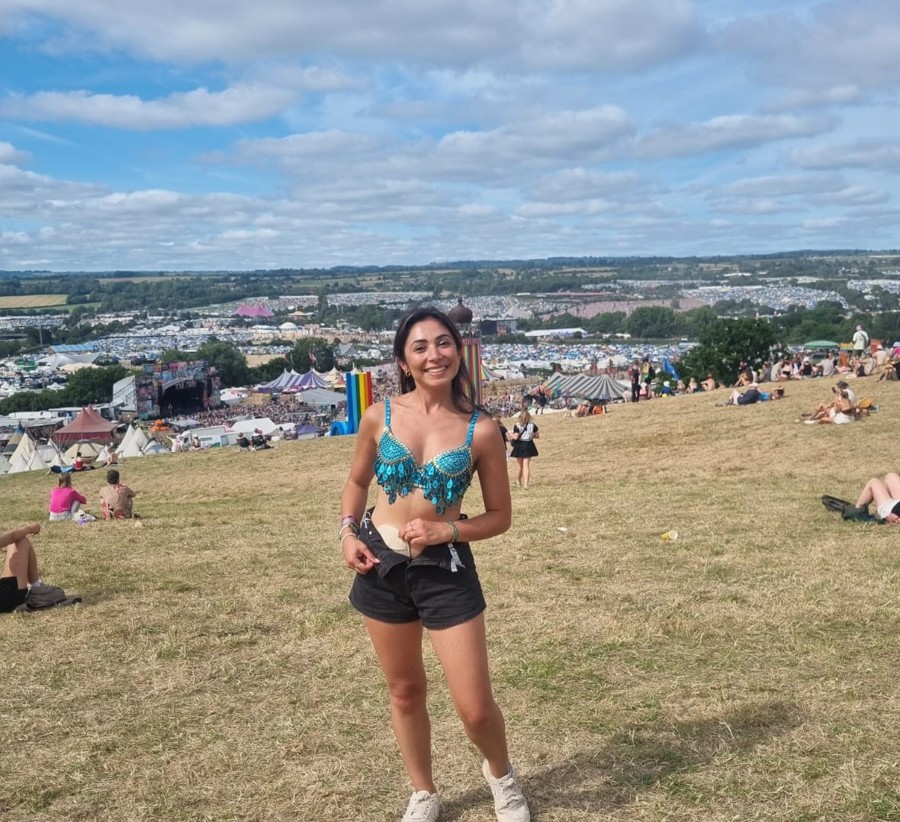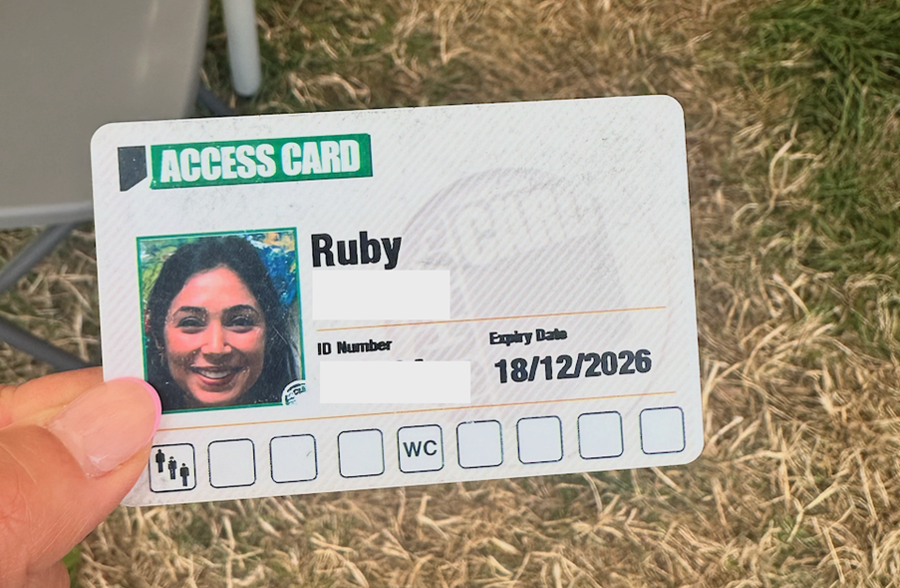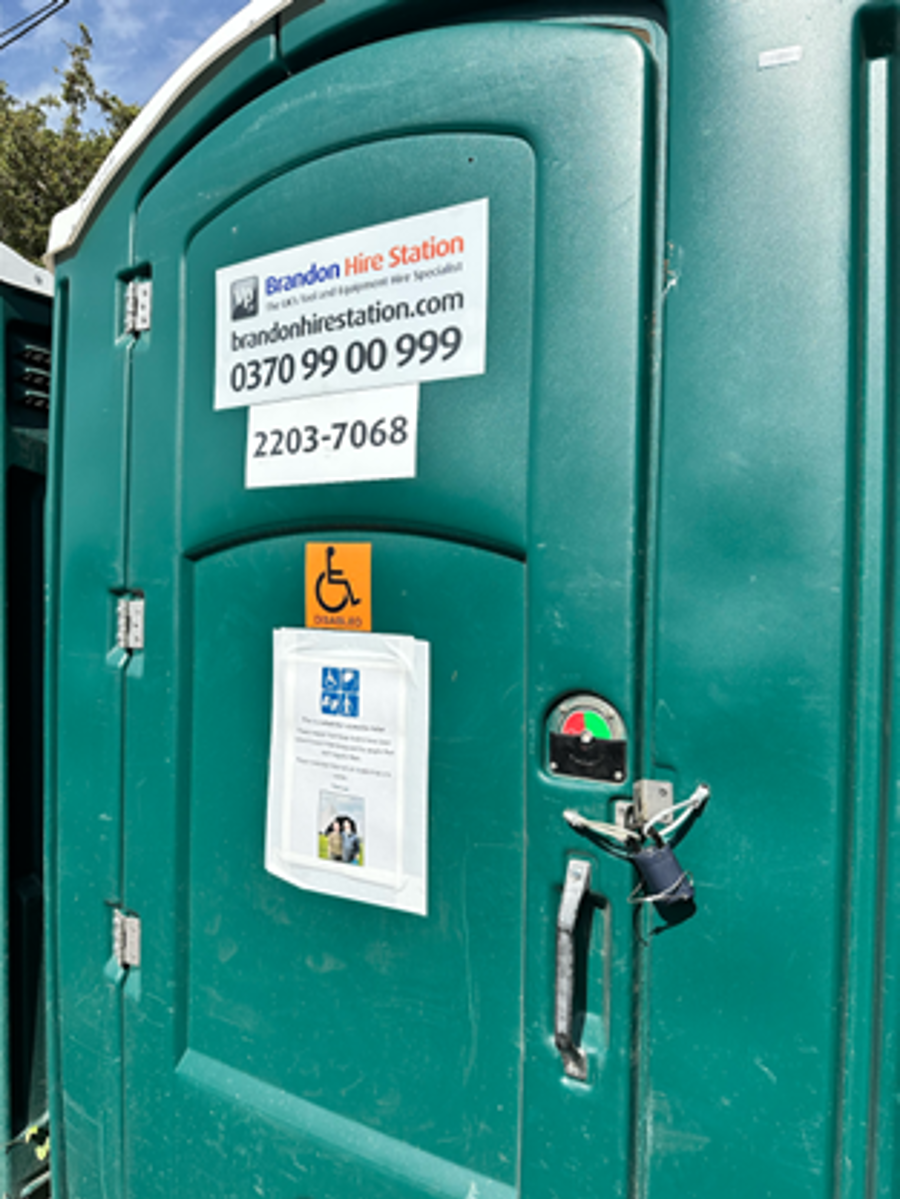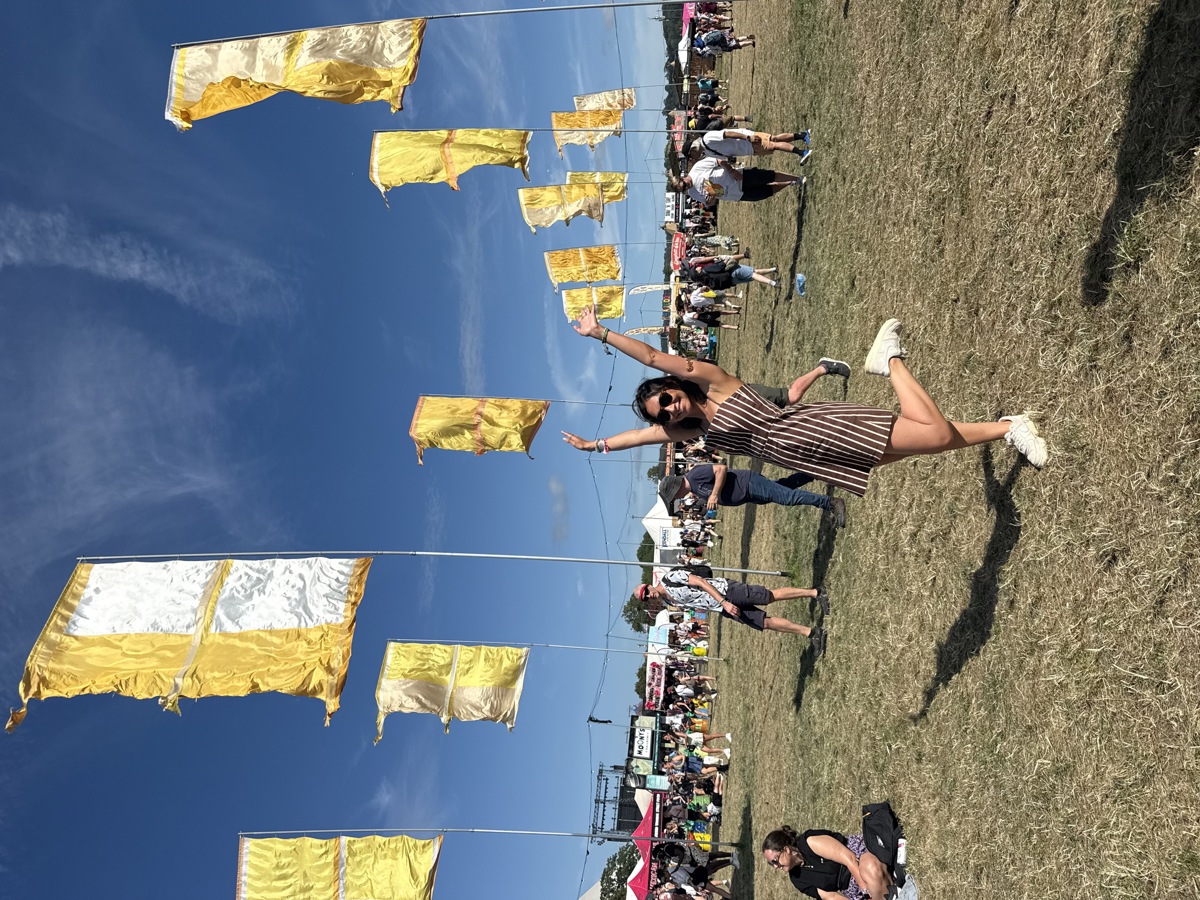
I was diagnosed with Colitis over seven years ago. After trying many different medicines, including steroids and biologics, I was still flaring lots and frequently ended up in hospital. It was after a particularly bad episode that my specialists suggested stoma surgery. I had the operation to remove most of my large intestine and now have a stoma bag. It sits neatly on the ‘nubbin’ that I’ve named Myrtle, because it groaned a lot like Moaning Myrtle when I first had surgery - one for any Harry Potter fans out there!
Emptying my poo multiple times a day from a bag attached to my belly has now become my new normal and Myrtle the stoma has allowed me to really live my best life. I’ve hiked and camped in Patagonia, walked up volcanoes in Guatemala, and spent multiple months living abroad. However, when I got tickets to Glastonbury Festival, despite feeling very excited, I knew this was going to be the biggest challenge I had faced yet.
That’s because, although I have done a lot of travelling, the thought of 200,000 people in a 1,000 acre space, felt like a lot of fellow music fans and not a lot of toilets. Whilst there are reported to be thousands of toilets on site, many are the sort of loos you want to use and dash out of immediately, and that’s not ideal for someone like me.
Once I secured my ticket back in December, my group and I decided to book glamping accommodation with pre-erected tents, access to better toilets, and warm showers available. There are a lot of glamping options available at different price points, and booking this in advance put my mind at rest before attending.
I also purchased a Nimbus access card, which is a card recognised by most institutions in the UK stating the requirements you need as a person living with a disability. For me, it was an accessible toilet, which meant I had the symbol WC on my card. The Glastonbury website said it accepted the cards, so knowing I had that measure in place before I went was very reassuring.

Ruby's Nimbus access card
With plenty of stoma supplies packed, as well as my glitzy festival outfits, I arrived at Glastonbury feeling slightly overwhelmed. We arrived too late for me to battle the crowds to go and get my accessible wristband, which meant using one of the compost toilets available to me for the first night. For anyone who has been to Glastonbury or any other festival, you know how bad these toilets can get. At this point, I seriously debated how I was going to do the festival.
Things then changed once I made my way over to the accessible campsite the next day, where I was greeted with friendly faces when I explained why I was there. I was presented with my access card, and they popped on my silver wristband and explained how it worked.
The wristband has four magic digits on it, the padlock code for the many accessible toilets or portaloos on site. The official Glastonbury Festival app had the details of where these toilets were located on the map. Some of them were by the main toilet facilities, others were behind manned gates. This immediately made me feel more relaxed, knowing that I could access a toilet whenever I needed to.
My expectations were definitely exceeded when I tried the toilets out for myself. No queues, cleaner facilities, and more space to put my things down, so I could get up close and personal with the toilet when emptying my bag. I felt confident that I could soak up festival life, and have fun after all!

One of the accessible toilets across the festival site
Once I dealt with overcoming the toilet challenge at the festival, it was time to deal with the sun. This Glastonbury was a scorcher and the festival site is known for having very little shade. Those with IBD or a stoma are at a higher risk of dehydration because of increased fluid loss, so staying hydrated is crucial. Suncream, a hat and water were essential. There were multiple water points on site which made it easy to keep refilling my bottle. I also added electrolytes to my water to increase the mineral intake and ensure added hydration.
The other challenge was knowing when to empty my bag if I wanted to get into the crowds and listen to the music. This just meant I emptied it a lot more frequently than I usually would before I saw any bands. That way I could make sure I wouldn’t have to battle back through crowds in a rush. There were occasions that my bag got very full, but knowing where the nearest accessible toilet was put my mind to ease. I was able to quickly get out of the crowds and to the toilets after the music finished if need be.
Attending festivals with Crohn’s or Colitis can be a daunting prospect. The crowds, the portaloos, and not having access to those creature comforts to help ease symptoms can feel like a lot. I’m hoping my experience can provide a glimmer of hope that it is possible to attend and enjoy a festival with bowel disease.
Preparation is key, and once that’s sorted, then it’s time to dance the days away. Music is something that really brings people together. It highlights the power of human connection and love. And for me, that’s the best feeling in the world.
Ruby

Ruby having the time of her life at the festival
My top tips for anyone attending a festival with IBD would include:
-
Check out whether the festival you’re attending has specific access cards for people with disabilities and contact the accessibility team for the festival far in advance to sign-up and or ask any concerns about toilets.
-
Carry tissues, wet wipes and hand sanitiser at all times! Even though the accessible toilets were more pleasant, a lot of them still needed a wipe or didn’t have loo roll.
-
Bring any medication and supplies. I changed my stoma bag every other day whilst at the festival, but even changing it once a day could help with preventing leaks. I also carried any additional supplies with me all day long, just in case I needed them. (This may also depend on how close your tent is to the stages).
-
Manage output with food and medication. Everyone’s stoma output will be different, but knowing what to cut out during the festival could help avoid fuller bags and leaks. I also carried loperamide with me at all times to thicken any loose output, and additional snacks in case my sugar levels dropped and there were queues for food. Understanding what works for you and your stoma or IBD could help.
-
Stay hydrated. Carrying a water bottle at all times is crucial! And if drinking alcohol, it’s important to keep hydrated at the same time.
-
Prepare for a big step count! Festival sites are usually huge and there is a lot of walking, especially if you’re at a campsite outside of the festival gates. Take your time and don’t be afraid to ask your group for breaks along the way. If I were to go back to Glastonbury, I would probably choose to stay within the festival instead of the glampsite that I did stay at, because of the distance.
You can connect with Ruby on Instagram (@rubyprem_) to find out more about her experiences, or follow her blog on Substack called Glimmers, where she shares what life is like with IBD and a stoma bag.

